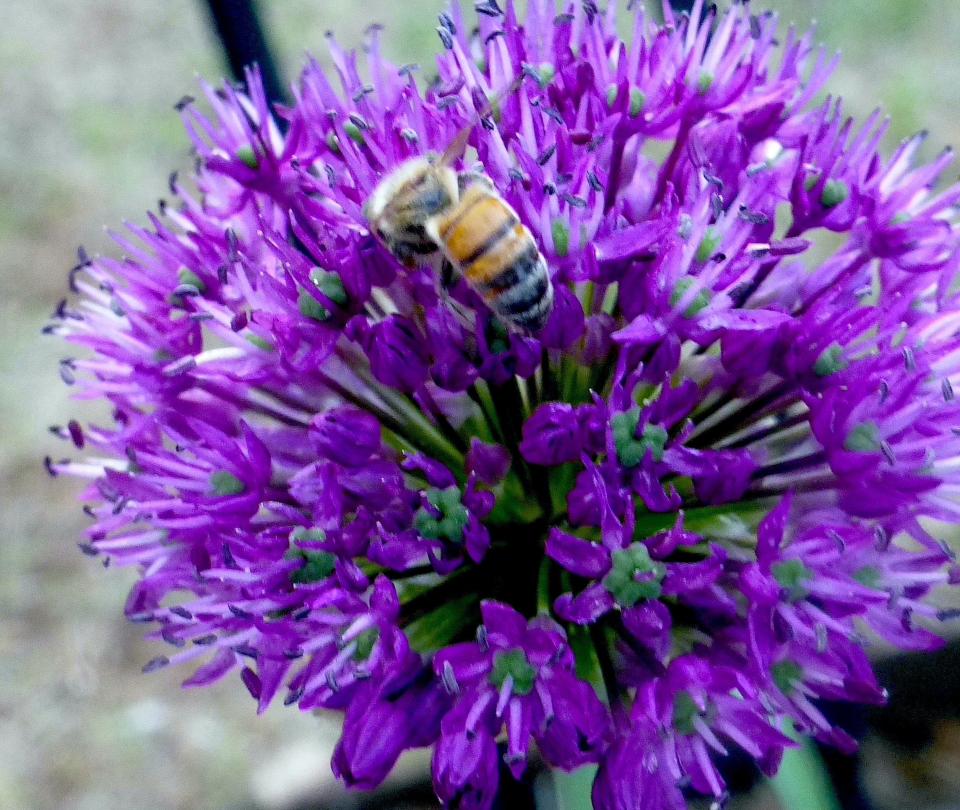Gardening for You: Mites pose danger for honey bees
Where would we be (!) without bees? Bees are irreplaceable in our food chain. One out of every three bites of food that we eat have been made possible by bees’ activities – nuts, fruit, and vegetables.
One hundred crops provide 90% of the world’s food and of these 100 crops, 71 are pollinated by bees (usda.gov). Think of a world without almonds, macadamia nuts; apples, cherries, kiwi, peaches, pears; cantaloupe, cucumber, squash, watermelon. Indeed, where would we be without those busy pollinating honey bees?

There are an estimated 2.7 million bee colonies in the United States. Many of those colonies are moved around as growers contract with beekeepers to arrange for hives to be stationed near their crops for pollination. The California almond industry alone needs approximately 1.8 million colonies of honey bees to adequately pollinate the nearly 1 million acres of almond orchards (abfnet.org).
Every year there are reports that pollinators, honey bees in particular, are experiencing a decline. There is finger-pointing as to the cause of the decline, often called colony collapse, but no doubt indiscriminate pesticide use is a principal player.
There is a particularly devastating pest that is being countered with an ingenious approach to save hives while limiting the use of chemicals to control the pest.
Much of bee hive decline can be attributed to a tiny parasitic mite, Varroa destructor. Varroa mite is one of the most serious pests of the honey bee, causing serious losses of bee populations.

Varroa mites feed off fat tissue of adult honey bees, pupae, and larvae. Mites attach themselves to adult bees and when an adult returns to the hive, the hitchhiking mites are introduced into the colony. Mites carry viruses that are damaging to the bees, presenting incredible risks to colonies as mite populations quickly explode, exacerbating damage to all stages of the honey bee.
Varroa mites are the bane of existence to the beekeeper. Losses of worker honey bees can be staggering, compelling many beekeepers resorting to poisoning mites to save the hive. Chemical usage for mite control has a lethal effect on honey bees.
The alternative to chemical control is genetic tolerance to the mite. Tolerance does not mean there are no mites in the hive rather, mite populations never explode to the extent that they cause hive mortality.
BeeWeaver Honey Farm located in Navasota, Texas, rears queens to create hives that exhibit tolerance to the Varroa mite (beeweaver.com). BeeWeaver’s ingenious breeding of queens was featured on Episode 8 of the reality PBS program "Charlie Bee Company", syndicated by American Public Television. Much of the bee content in this and next week’s column has been gleaned from this program.
Some told Mr. Weaver developing bees that could tolerate the mite couldn’t be done, akin to “finding sheep that are resistant to wolves.” Yet Mr. Weaver’s vision to breed for tolerance to the Varroa is brilliant.
The discussion on the strategy for breeding queens tolerant to Varroa mite continues next week in Part 2.
Ellen Peffley taught horticulture at the college level for 28 years, 25 of those at Texas Tech, during which time she developed two onion varieties. She is now the sole proprietor of From the Garden, a market garden farmette. You can email her at gardens@suddenlink.net
This article originally appeared on Lubbock Avalanche-Journal: Gardening for You: Mites pose danger for honey bees

